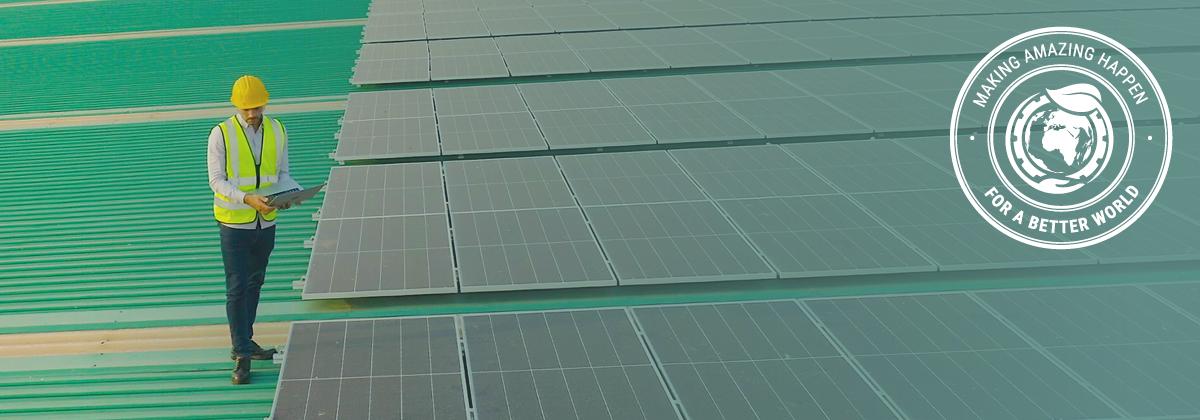Sustainability efforts at RS Group, translate into improved MRO in your organisation, says Andrea Barrett, Vice President of Social Responsibility and Sustainability
This article is one of a series in which senior management at RS explore Environmental, Social and Corporate Governance (ESG) and the role it plays strengthening strategies for better management of Maintenance, Repair and Operations (MRO) of company sites and facilities.
Here Vice President of Social Responsibility and Sustainability at RS Group, Andrea Barrett, shares how sustainability measures introduced within the organisation benefit customers who rely on RS as a trusted supplier for MRO.
Our focus on sustainable operations
In recent years, we’ve had a real focus within the RS Group on delivering more sustainable operations. For example, as outlined in our recent ESG plan, we have cut our scope one and two carbon emissions from our premises energy usage by 62 percent since 2014/15.
However, unlike in a scenario where we saved a food manufacturer £200,000 through a more sustainable lighting system, many of these efforts to improve sustainability are not changes which customers can see, touch of feel.
We will be introducing more carbon reporting so the organisations we supply can better understand the progress we’re making and, crucially, how this reduces their scope three emissions – that is indirect emissions that occur in their value chain, whether upstream or downstream. In the meantime, these are just some of the ways that our sustainability targets contribute to improved MRO in your business.
Cutting your scope three emissions with renewable energy
With any sustainability or net zero plan, moving to renewable electricity is a basic first step.
As of 2021, 67 percent of our electricity was from renewable sources, and we are striving to get that to 100 percent by the middle of the decade.
We’ve put solar panels and a green grass roof on the new extension at our Bad Hersfeld site in Germany, capable of generating 750 kW capacity and they feed energy back into the local power grid too. We’ve also implemented energy efficiency measures such as LED lighting controls in distribution centres to really reduce energy consumption in the first place.
Making it easier to recycle packaging
We’ve done a lot on waste, with 76 percent already recycled, and we’re doing more around packaging.
We’re buying more sustainable packaging alternatives that contain recycled content and can be recycled at the end of its life. We switched our Jiffy parcel carriers in the UK, for instance, over to recyclable envelopes. We’re also reducing packaging through the use automated packaging machines. Three of our big distribution centres have these and they fit packaging to the order.
Reducing the carbon footprint of your supply chain
We are a distributor. We’re moving 60,000 products daily, so transport is one of the most significant parts of our carbon footprint – and so a significant contributor to the scope three emissions of our customers.
We’re tackling this by restructuring our supply chain to source, store and deliver products closer to where our suppliers and customers are, so they travel fewer miles. This is made possible by our global footprint of 12 distribution centres.
We’re also selecting less carbon intensive modes of transport such as road, rail or sea rather than aviation. To give an example, we know that having switched the replenishments to our Asia Pacific distribution centres in late 2020, we’re saving 60 percent of carbon emissions on those lines.
Ensuring your products meet ethical standards
Sustainability isn’t just about the environment. It’s also about taking care of people.
Now, as well as oversight of the materials going into your products, you’ve got to have oversight of the people involved in the whole supply chain to make sure that it is ethical and, thus, sustainable in the long term. You have to map your supply chain to gain that visibility, set standards for supplier codes of conduct and ethical trading and check that these are clear and adhered to. It is not just a one-time tick box exercise.
As a company, we’re taking a strong approach to make sure that we’re working with suppliers who are signed up to rigorous ethical and environmental standards. This is something we’re keenly focused on. With RS Pro, our main own label brand, we already map suppliers and understand the hazards involved. We do face to face ethical inspections, with 89 audits of our highest risk suppliers over the last two years.
More broadly, we’ve introduced a new ethical trading declaration for our suppliers, signed up to the UN Global Compact and have just started a new partnership with leading supply chain management platform Sedex to further develop our level of visibility and ethical trading tools.
Facilitating collaboration
The biggest part of our carbon footprint is outside of own operations. It is the same for many companies, particularly in the industrial sector, because of the life cycle of the products and their movement. Therefore, one the biggest challenges for our customer and supplier partners across the value chain is to work all together to improve ESG standards and performance.
It’s about collaboration. Customers are demanding sustainable solutions and more ethical and sustainable goods – and suppliers are responding to that. This is where RS Group has a unique role to play because we can bring the whole community together to really affect positive change.
To learn about the sustainability goals RS is pursuing and how they support MRO best practice within your organisation, read about the 2030 ESG plan in another article from this series by senior management at RS, exploring ESG and its importance for better management of MRO.





